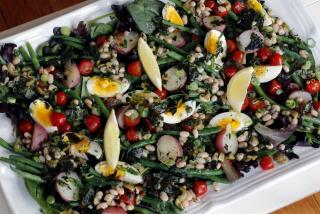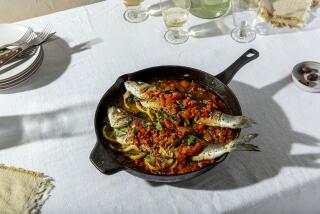Life Style of Mormons Cuts Risk of Death
- Share via
A study of nearly 10,000 active Mormons in California credits clean living--no tobacco, regular exercise and a good night’s sleep--with some of the largest reductions in risk of death from cancer and cardiovascular disease ever reported.
The study, by an epidemiologist at the UCLA School of Public Health, found that middle-aged high priests adhering to those habits had only 34% the normal cancer death rate for their age group and only 14% the normal death rate from heart and blood vessel disease. Mormon high priests are certain long-term, devout Mormons who have risen to the highest rank of the church’s lay priesthood.
Their wives, too, enjoyed comparable health advantages. Their rate of death from cancer was little more than half that of white women in general, and their rate of death from cardiovascular disease was one-third of the normal rate.
“If people want to minimize their mortality rate and maximize their longevity, this is certainly one way of doing it,” James E. Enstrom, the researcher, said in an interview. “I’m not a Mormon, and I don’t recommend that people have to become Mormons to do this.” His findings were published today in the Journal of the National Cancer Institute.
Religiously active Mormons abstain from tobacco, alcohol and caffeine under guidelines written down in their Doctrine and Covenants. Mormon doctrine also emphasizes family life, education, a well-balanced diet and good health practices in general.
The priests studied by Enstrom may also have benefited from their participation in so-called social networks, such as their marriages and the church. Past research has linked social networks to longevity, quite apart from other health practices.
“I think there’s a social support factor at work there,” George K. Jarvis, a University of Alberta, Canada, sociologist, said in a telephone interview. “ . . . There is ample research that if we participate in groups that are meaningful to us, we benefit in health.”
To see whether his rather dramatic findings could be reproduced in the general population, Enstrom also analyzed a comparable group of white, nonsmoking, church-going men and women in Alameda County from all religions. He found similar health gains.
“These results demonstrate substantial progress in prevention of cancer and other diseases in one well-defined population, and they suggest a life style that could result in a major reduction in cancer mortality, as well as mortality in general,” Enstrom wrote.
Jarvis, who has published a detailed review of much of the controversial past research on the effects of religion on rates of illness and death, described Enstrom’s findings as remarkable for the magnitude of the health benefit he documented.
“I think it’s great when anybody finds anything that could lead to extension of an active and happy life,” Jarvis said. “If there are some aspects of life among Mormons, or any other group, that people might want to adopt, everybody is happy to find this out.”
Enstrom, a researcher in the UCLA School of Public Health who began studying Mormons in the early 1970s, based his findings on responses to detailed questionnaires about life style, diet and medical history mailed out in late 1979 to Mormon high priests and their wives.
Enstrom received responses from 5,231 priests and 4,613 wives between the ages of 25 and 99. He then matched those responses to records kept by the church of all Mormon high priests in California who died between 1980 and 1987.
The findings were most dramatic among priests and wives under 65.
In that group, those who did not smoke, exercised regularly and got seven to eight hours of sleep each night had approximately 34% the expected rate of death from cancer. Their rate of death from cardiovascular disease was about 14% of what is expected, and their overall death rate about 22%.
As an example, Enstrom cited a hypothetical, 25-year-old high priest with those health habits. He would have a life expectancy of 85 and only a 5% chance of dying before 65. The average 25-year-old white man in the United States has a life expectancy of 74.
Similarly, a 25-year-old wife of a high priest who also adhered to those habits would have a life expectancy of 86 and only a 7% chance of dying by 65. The average 25-year-old white woman has a life expectancy of 80.
The women with good health habits had only about 55% the rate of cancer mortality and 34% the rate of cardiovascular disease mortality expected among middle-aged white females, Enstrom found. Their overall mortality rate was about 47% that of the expected rate.






